How J. Edgar Hoover, the FBI's first and longest director of the FBI, used controversial methods to turn the agency into one of the most efficient investigative forces in the world
James Pasley

- J. Edgar Hoover took over the FBI, then known as the Bureau of Investigation in 1924 when he was 29 years old.
- At first, agents couldn't carry weapons and reported suspects to other law officials. Hoover changed all that.
Edgar Hoover ran the FBI For 48 years, serving under eight different presidents. Hoover turned the agency from a relatively powerless group into one of the most efficient investigative forces in the world.
He had the FBI fight several threats to the country, including communists, gangsters, and Nazis. But he also had the agency spend decades harassing people of color, anti-war protestors, women, and the LGBTQ+ community.
Hoover was known for keeping files on almost anyone with power and influence, including Supreme Court justices, senators, congressmen, and presidents, as well as actors and writers. The list included President John F. Kennedy, Eleanor Roosevelt, Albert Einstein, and Felix Frankfurter.
In 1972, after he died, then-US Attorney General Laurence Silberman reviewed some of Hoover's secret files. He later said of it, "J. Edgar Hoover was like a sewer that collected dirt. I now believe he was the worst public servant in our history."
John Edgar Hoover was born in Washington, D.C., in 1895.

He was the youngest of four children. As a child, he had a stutter that he overcame by speaking quickly. He also joined the debating team in high school.
Hoover was from Washington and spent most of his life in this city. He never got a passport and never traveled outside of the US.
He grew up as a devout Protestant. He worked as a Sunday School teacher and planned to become a minister until his father got sick and his family needed another income.
His father struggled with depression and died in 1921 when he was 64. Hoover lived with his mother and continued to do so until she died in 1938.
Sources: History Today, New Yorker, BBC, PBS
In 1917, he got a job at the Library of Congress.
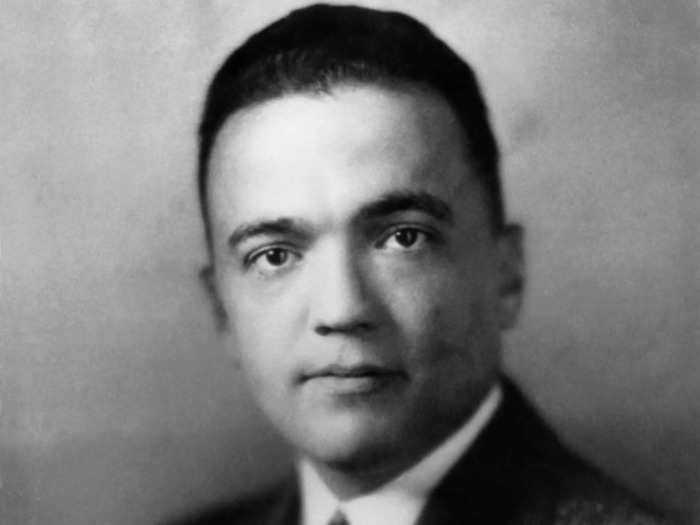
He worked there for two years and first developed a taste for classifying information. His mentor showed him how to catalog.
Sources: History Today, New Yorker, Washington Post
At night, Hoover studied law at George Washington University.
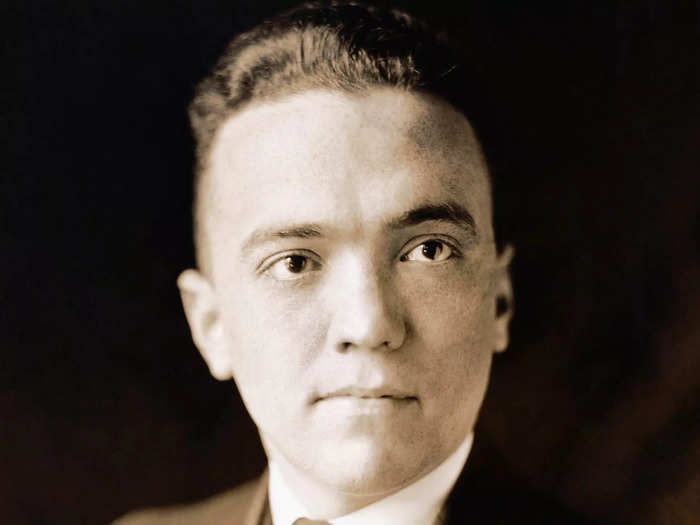
He joined a southern fraternity called Kappa Alpha, which upheld and applauded the history of keeping enslaved people in the South. In the 1950s, Kappa Alpha continued to hold shows where actors dressed up in blackface and also hosted Confederate-themed balls.
Hoover continued to go to these events in the 1950s.
Sources: History Today, New Yorker, WBUR
After graduating, he got a job in the Department of Justice.
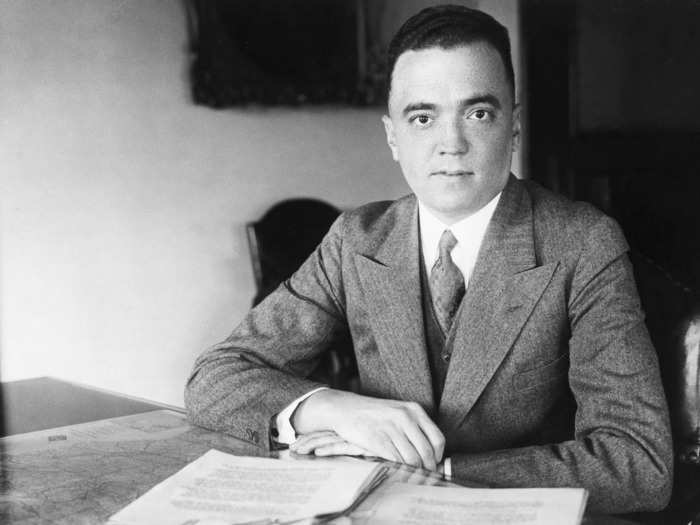
In 1919, US Attorney General A. Mitchell Palmer liked Hoover's efficiency and political leanings and appointed him head of the Radical Division of the Bureau of Investigation when Hoover was 24 years old.
The Radical Division had a staff of 25 and focused on monitoring radicals — from pacifists to socialists or anarchists — arresting them and deporting them. The raids resulted in thousands of arrests and 556 people being deported. The agents didn't use warrants.
The raids were known as the "Palmer Raids," and within a few years, public opinion had turned against the raids and Palmer was forced to resign. Hoover kept his job though and in 1921 was appointed the bureau's assistant director.
Sources: Atlantic, New Yorker, History, PBS, New York Times
In 1924, after another scandal involving corrupt politicians called the "Teapot Dome scandal," Hoover was appointed acting director of the bureau.
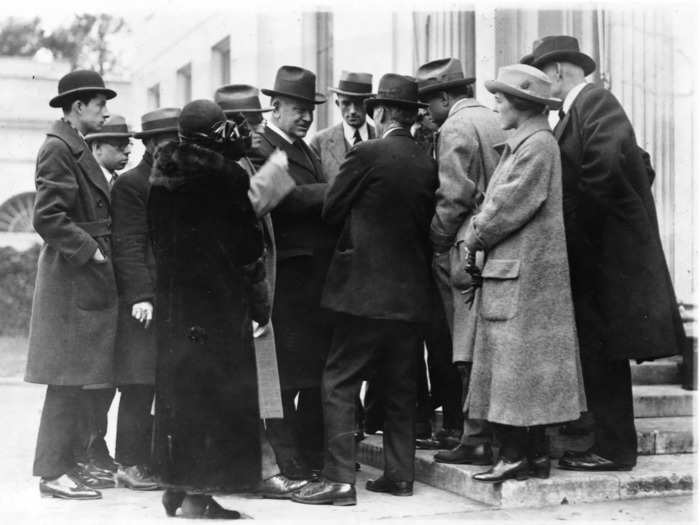
The scandal involved the secret exploitation of oil-rich land in Wyoming by private companies and Cabinet officials.
When Hoover was appointed as the head of the bureau, agents weren't allowed to carry weapons and had to report suspects to other law officials who conduct arrests.
When Hoover took over, he had a few conditions: he wanted the bureau to be apolitical and he only wanted to answer to the attorney general. His conditions were granted.
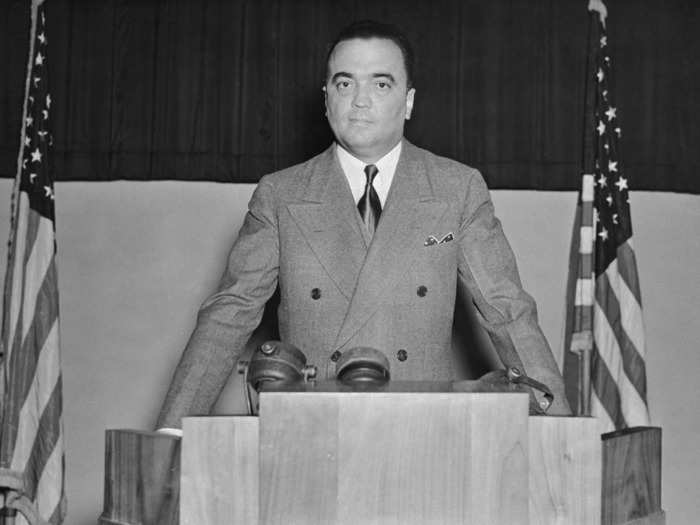
Forty years later, before much of what went on behind the scenes at the FBI became public, The New York Times reported one of the only criticisms aimed at Hoover was his establishment of a "cult of personality."
An unnamed official also pointed to the fact FBI offices always had a picture of Hoover but rarely had one of the attorney general or the president.
Sources: PBS, New York Times
Under Hoover's command, the bureau focused on turning its work into a science.
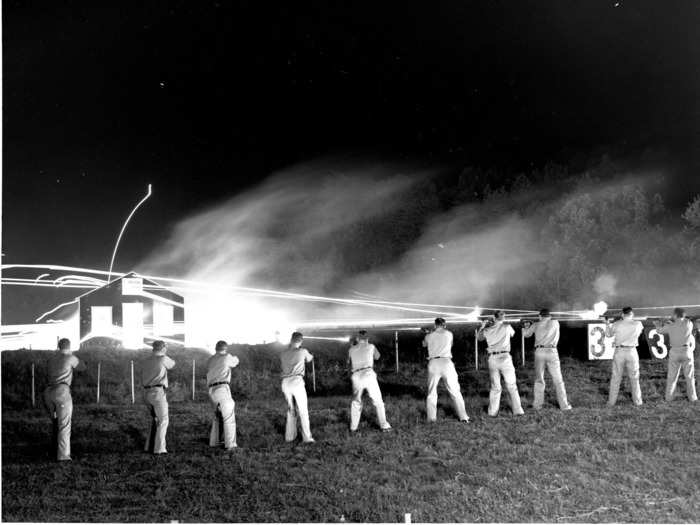
In 1932, it began to test ballistics and fingerprints. It was the country's first crime laboratory. Within four years, it had 6 million criminal fingerprints on file.
New hires had to have college degrees. He liked accountants and lawyers for their professionalism. The new hires were trained to use guns and analyze forensic information.
Hoover hired more effective agents and enforced a new rigid code of conduct. What had only years before been seen as a corrupt branch of government, he turned into an efficient machine.
Sources: PBS, New York Times, Atlantic
They had to be white men. Women and minorities were excluded.
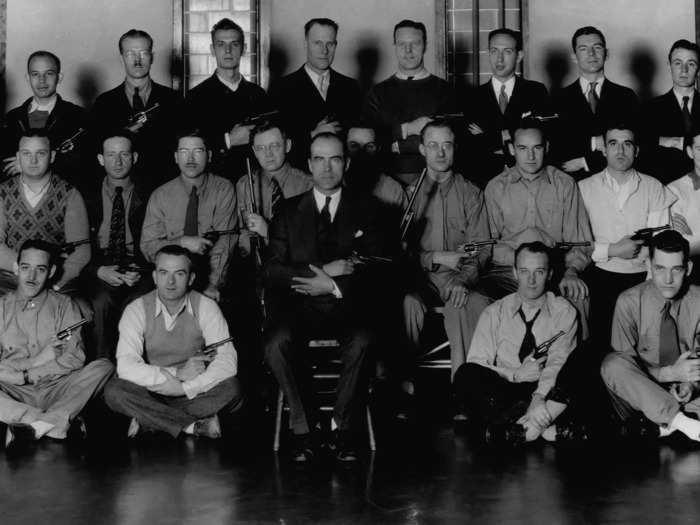
Sources: PBS, New York Times
In 1933, President Franklin D. Roosevelt chose the bureau as one of his tools in waging a "War on Crime."
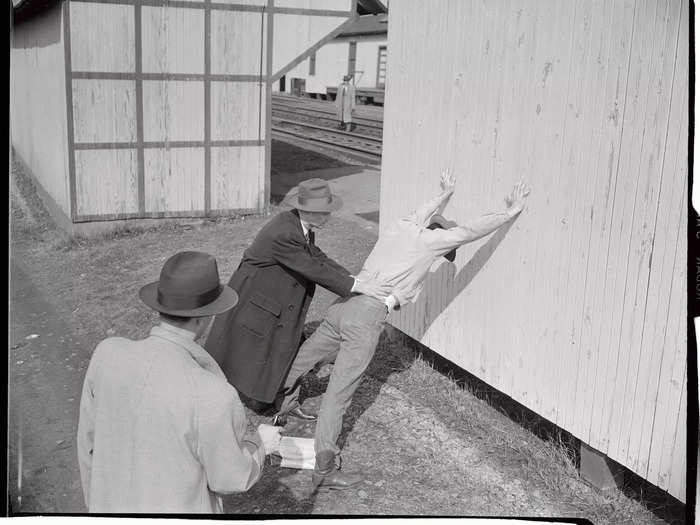
It was in response to a wave of famous criminals robbing banks and killing people, including John Dillinger and Bonnie and Clyde. Roosevelt passed 21 new laws, giving agents the power to investigate extortion, racketeering, bank robbery, and the murder of federal officials.
In 1934, the FBI's reputation got a boost when its agents, known as "G-men," killed John Dillinger. In the same period, law enforcement agents — not always from the bureau — also killed Bonnie and Clyde, Charles Floyd, and Baby Face Nelson.
"When the smoke cleared from the mayhem, J. Edgar Hoover emerged as an Untouchable in official Washington," Buffalo News reported.
Sources: Atlantic, New York Times, Guardian, PBS, New York Times, Buffalo News
Soon after, a film called "G-Men" came out, which helped the bureau's reputation even more. Hoover would often use Hollywood to promote the FBI to the public.
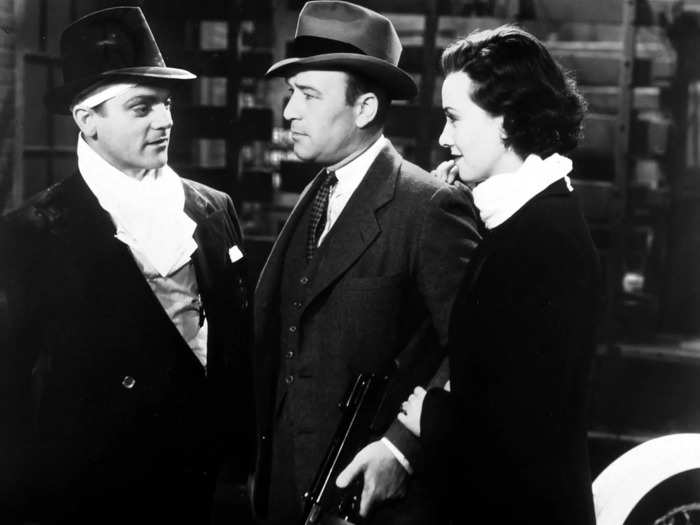
In 1935, the bureau was renamed the Federal Bureau of Investigation.
Sources: Guardian, PBS, New York Times, Buffalo News
In 1936, Hoover's own experience dealing with criminals was questioned in the Senate because he had never actually made an arrest.
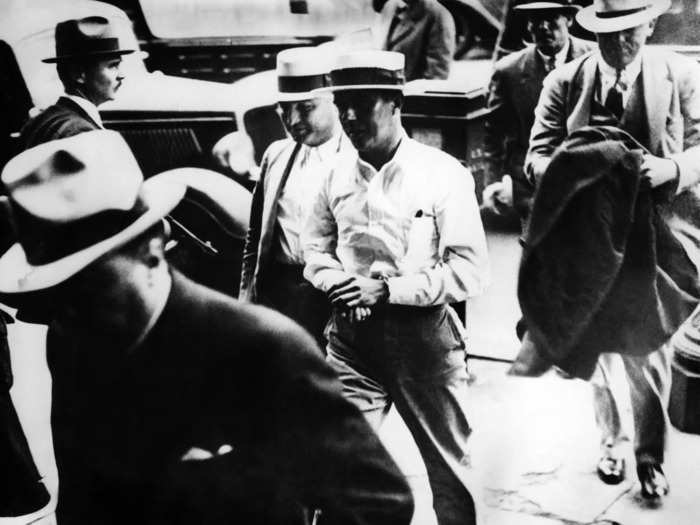
In response, a few days later, Hoover attended the arrest of a well-known criminal named Alvin Karpis.
He personally apprehended Karpis, stopping him from grabbing a weapon.
Source: New York Times
That same year, in the lead-up to World War II, Hoover's long period of surveillance began when Roosevelt asked him to gather information on communists and fascists.
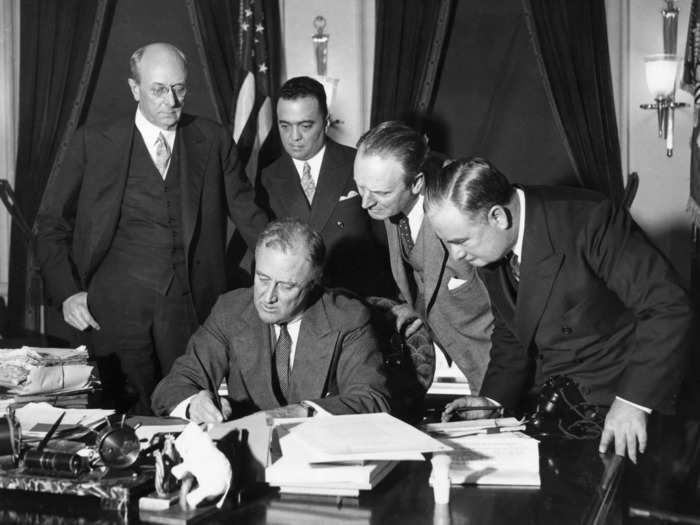
It was around this period that Hoover began to appear consistently with Clyde Tolson, another FBI agent who the media called Hoover's "right-hand man."
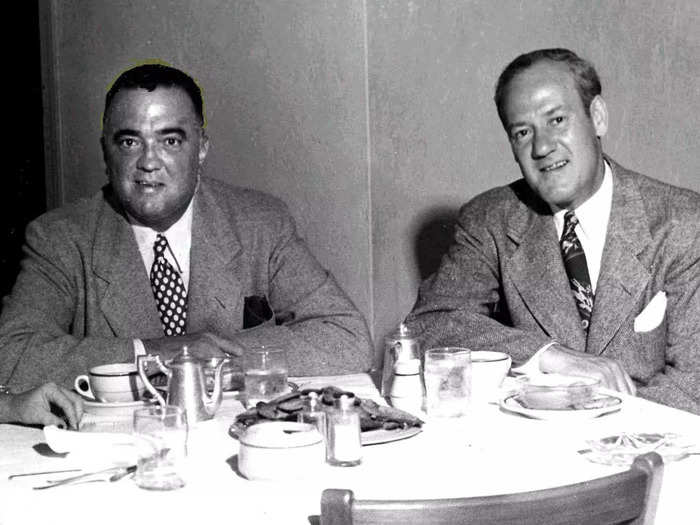
Tolson later became Hoover's assistant director.
Sources: New Yorker, Guardian
They were seen daily getting lunch or going out to nightclubs and shows, and they took vacations each year together.
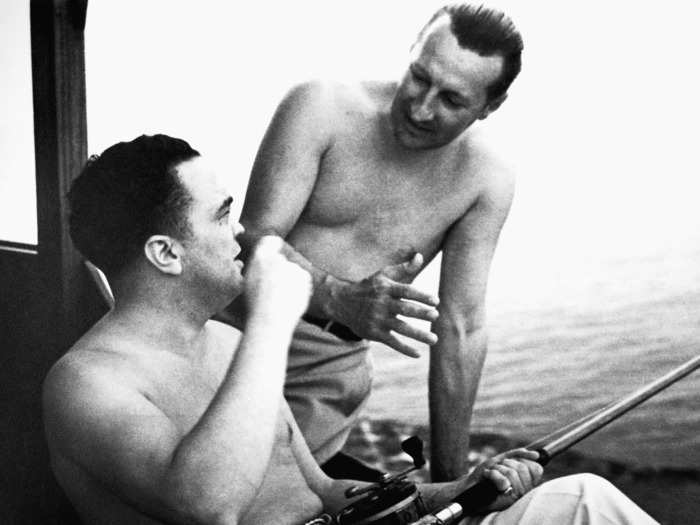
Both men never married and were rumored to be lovers, but their relationship has never been confirmed.
Sources: New Yorker, Guardian
During World War II, Hoover focused the FBI on searching for spies and Nazis within the US borders.
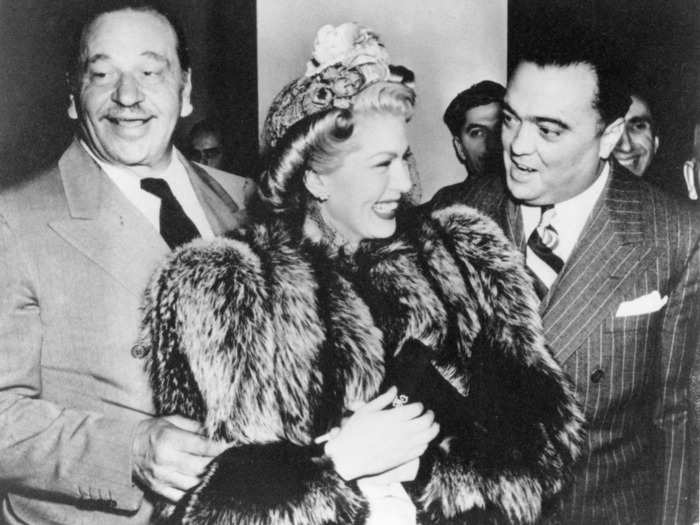
His reputation was bolstered on the left when he opposed the internment of Japanese people, saying it was an "extremely unfortunate" policy.
Sources: History, New York Times
In the years after the war, he turned the FBI's attention back onto communists and Russian spies.
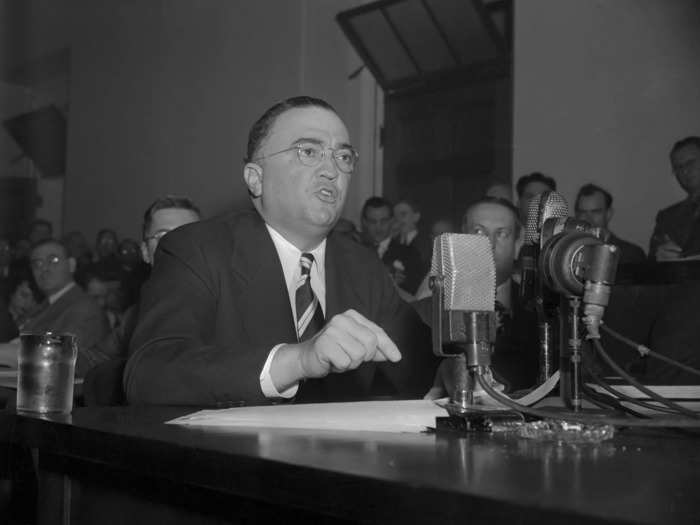
He was at his most popular in the 1950s as Sen. Joseph McCarthy went after communists during the McCarthy hearings.
Sources: History, New York Times
In 1953, a Gallup poll found that just 2% of Americans disliked Hoover, which was a remarkably low percentage for a public figure.
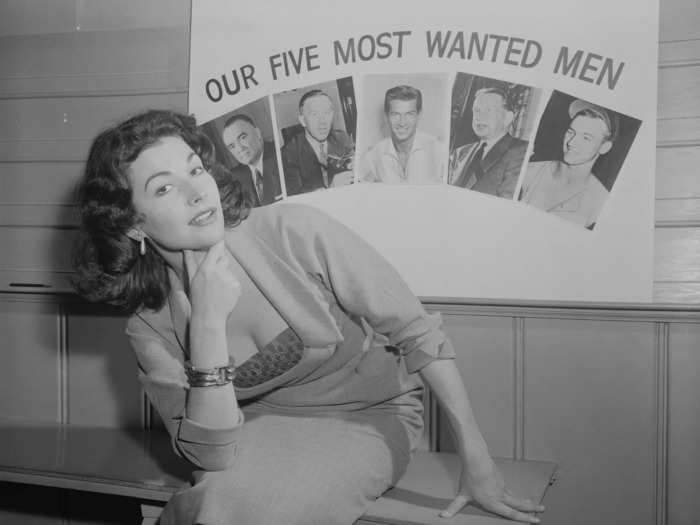
In a poll taken in 1956 by the Hollywood Bachelor Girls Club, he appeared in the top 5 "Most Wanted Men."
Sources: History, New York Times
But behind the scenes, he wasn't so beloved.
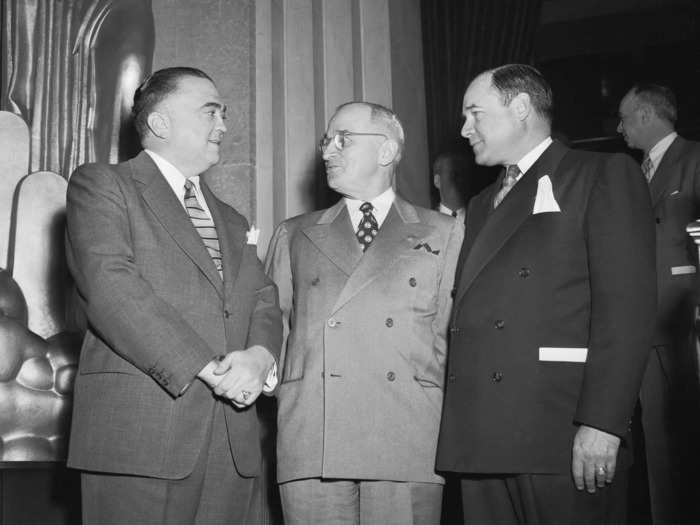
For one thing, President Harry Truman was wary of him and his methods.
Truman wrote during this period, "We want no Gestapo or secret police. FBI is tending in that direction."
"They are dabbling in sex-life scandals and plain blackmail … Edgar Hoover would give his right eye to take over, and all congressmen and senators are afraid of him," he wrote."
Source: Guardian
After the McCarthy hearings, Hoover started worrying the US was wavering in its fight against communism.
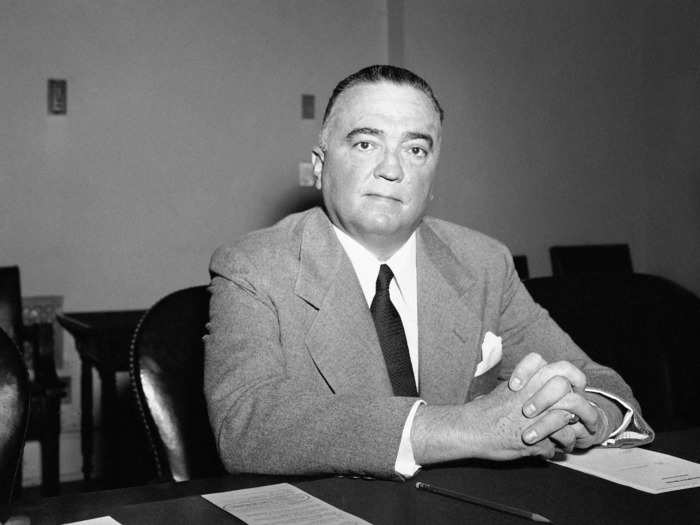
In response, he launched a covert program called Counterintelligence Program, or "Cointelpro," in 1956. The program had agents gathering information and attempting to disrupt or destroy communist groups.
Later, the program attempted to do the same thing to anti-war and civil rights groups, women's rights groups, and student associations.
According to Beverly Gage, who wrote "G-Man: J. Edgar Hoover and the Making of the American Century," agents were "writing anonymous letters, spreading rumors, using informants as provocateurs, planting false stories in the press."
Sources: New York Times, New York Times, Atlantic
Hoover compiled files on almost anyone with any power.
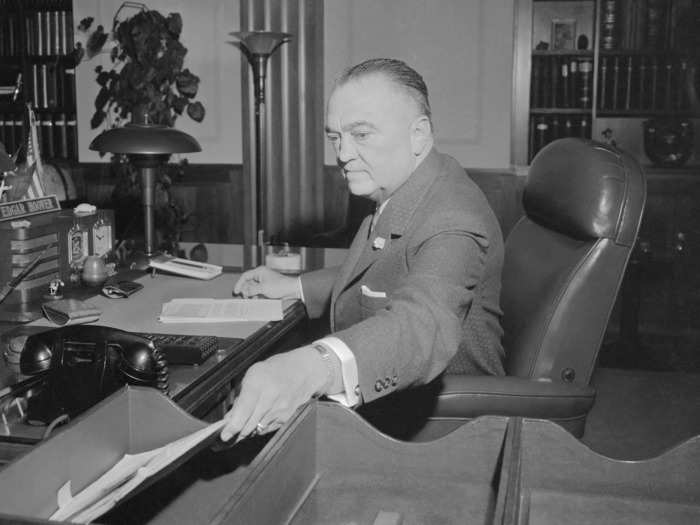
He had files on Supreme Court justices, senators, congressmen, and presidents, as well as on actors and writers. The list included President John F. Kennedy, Eleanor Roosevelt, Albert Einstein, and Felix Frankfurter.
The files weren't only filled with reliable information either. They often had rumors about sexual relationships and ties to supposed radical groups.
Loch K. Johnson, a professor of public and international affairs at the University of Georgia, told The New York Times, "It wasn't just spying on Americans. The intent of Cointelpro was to destroy lives and ruin reputations."
From 1956 to 1971, Hoover OK'd at least 2,000 illegal actions by the FBI to target different groups, according to Lerone A. Martin, author of "The Gospel of J. Edgar Hoover: How the FBI Aided and Abetted the Rise of White Christian Nationalism."
Sources: Guardian, New York Times, History Today, Washington Post
But Hoover still had blind spots. The mafia was one of them.
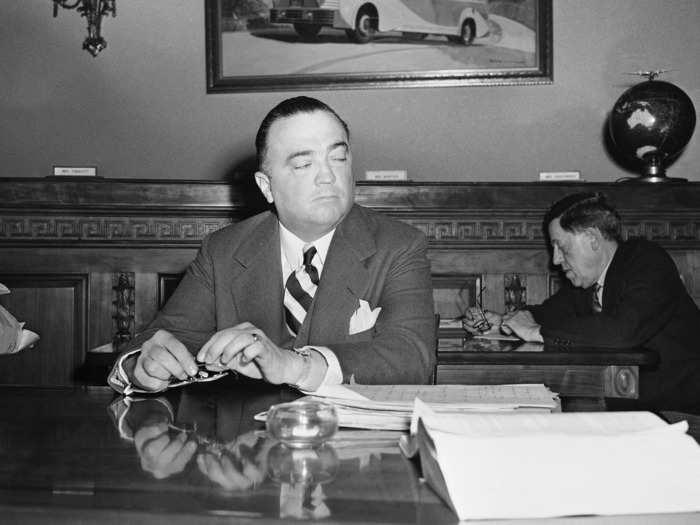
He didn't take the idea of a criminal network seriously, and while the FBI's New York office had 400 agents monitoring "subversives," it only had four agents looking at organized crime.
Reportedly, Hoover thought it would be too complicated and didn't want the FBI's reputation to be tarnished by the investigations, Selwyn Raab wrote in "Five Families: The Rise, Decline, and Resurgence of America's Most Powerful Mafia Empires."
In 1957, he was forced to admit there was a problem after 58 members of the mafia were caught and arrested meeting in a house in upstate New York. The incident prompted the FBI to establish a mafia task force.
Source: Smithsonian Magazine
In 1958, Hoover was awarded a presidential award for his "brilliant leadership has contributed immeasurably to the preservation and strength of the nation, its constitution and laws."
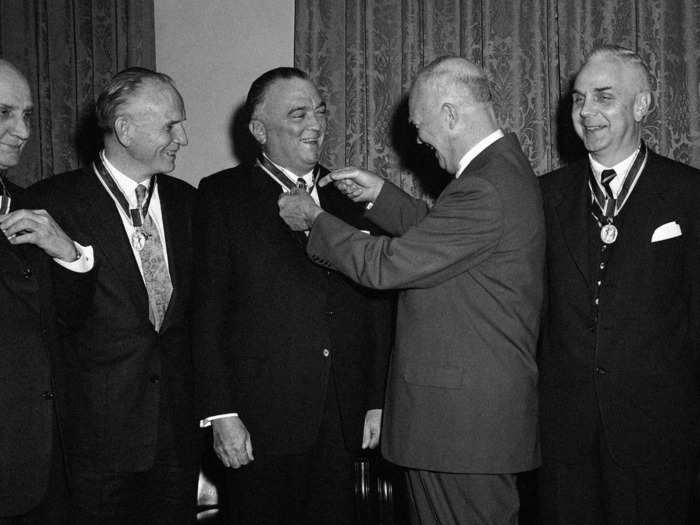
At the same time, Hoover continued working on the bureau's public image. He granted limited access to a reporter to write a favorable book about the FBI that he then had Hollywood turn into a blockbuster. The film "The FBI Story" came out in 1959.
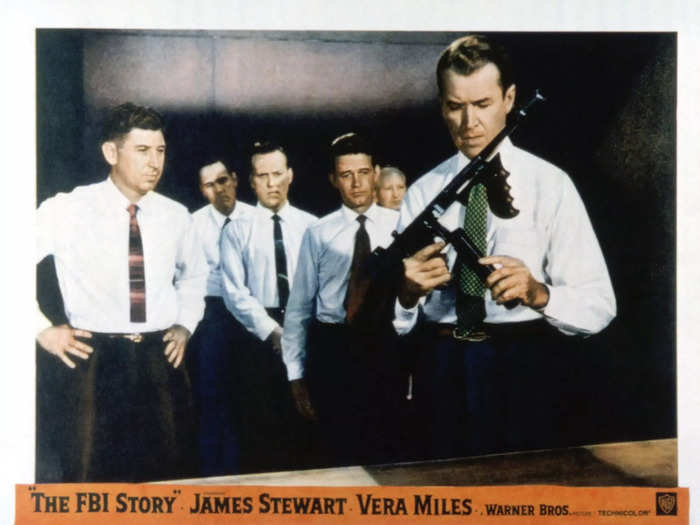
Source: Hill
At President Lyndon B. Johnson's suggestion, Cointelpro eventually turned its focus onto white supremacy groups, including the Ku Klux Klan.
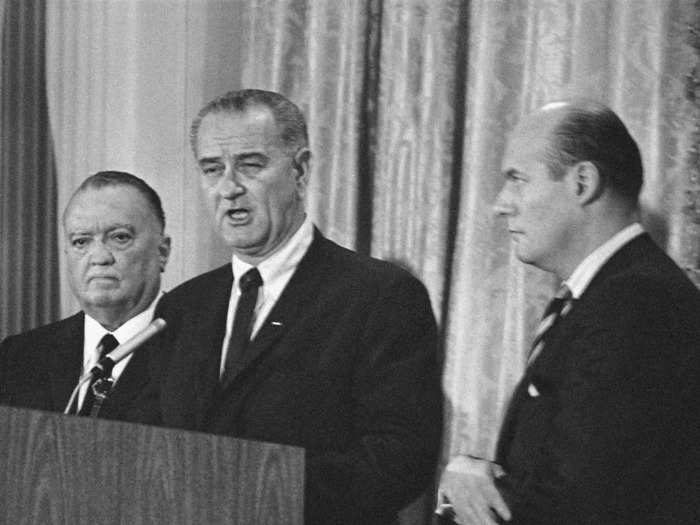
This was the first time there was no tie, or suspected tie, to a foreign group. It was an entirely domestic matter.
Source: Atlantic
In 1964, after 40 years of leading the bureau, Hoover was described by the media as having created a highly reputable national police force that had not weathered a scandal in those 40 years.
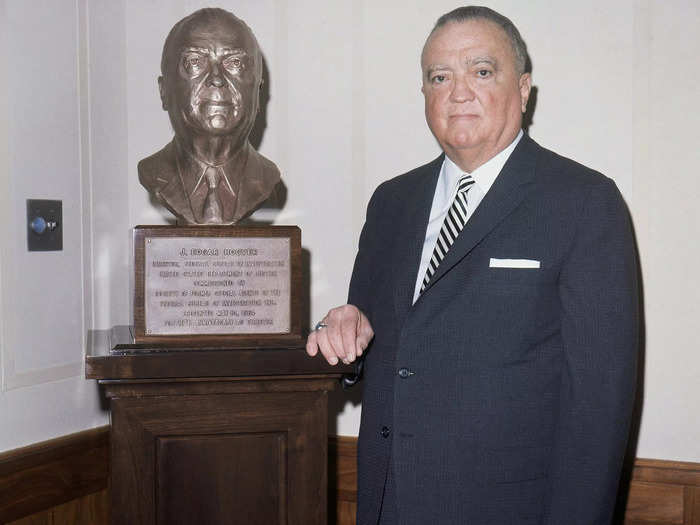
Sources: Atlantic, History, Guardian, New York Times, Washington Post
Despite this, things began to get a bit rocky for Hoover in the 1960s as he took on the civil rights movement. He believed that it was tied to communism.
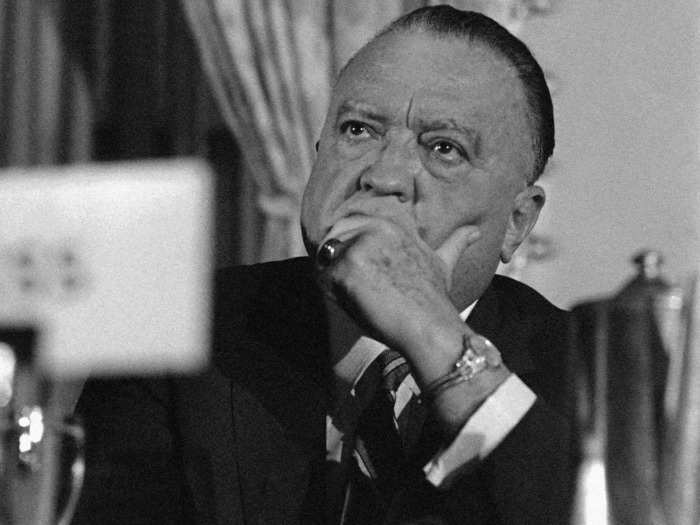
He also refused to let his agents protect Black civil rights members or investigate attacks against Black protestors. He claimed they didn't have the jurisdiction.
But there are reports that his personal views were behind his reluctance.
He reportedly said, "I'm not going to send the FBI in every time some [n-word] woman says she's been raped."
Sources: Atlantic, History, Guardian, New York Times, Washington Post
The famed civil rights leader Martin Luther King Jr. was one of Hoover's main targets.
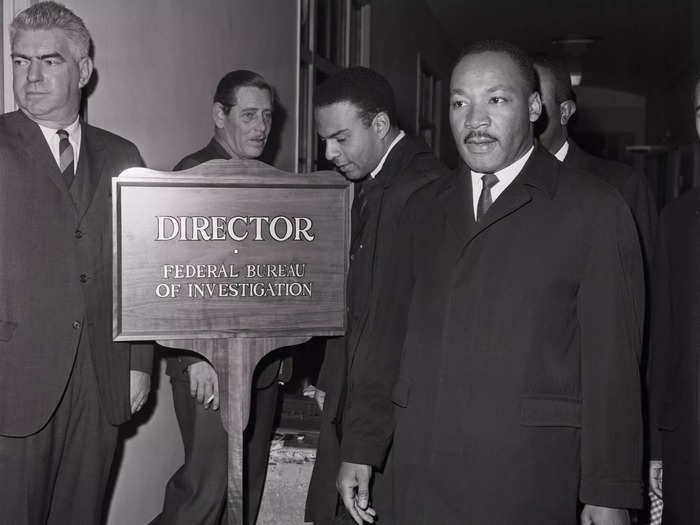
Hoover was sure he was tied to communists. The FBI bugged his hotel room but instead of finding links to communism, it recorded extramarital affairs.
In 1964, Hoover publicly said he considered King to be the "most notorious liar in the country."
In private, the FBI sent the recordings of King's affair to his wife and a letter telling King to commit suicide rather than watch his affair ruin his reputation once the FBI made it public.
The letter said, "King, there is only one thing left for you to do. You know what it is. You have just 34 days in which to do it."
Sources: Atlantic, Conversation, WBUR
In 1965, Hoover turned 70 and was required by law to retire. However, President Johnson waived the requirement and allowed him to stay in office.
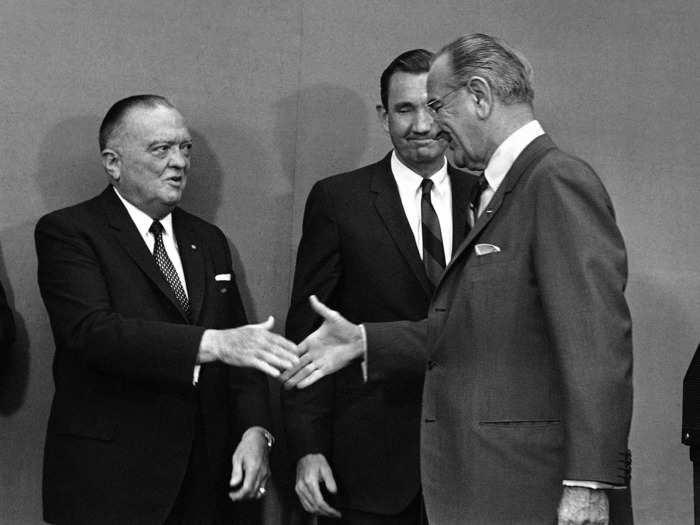
Five years later, in 1970, President Richard Nixon butted heads with Hoover.
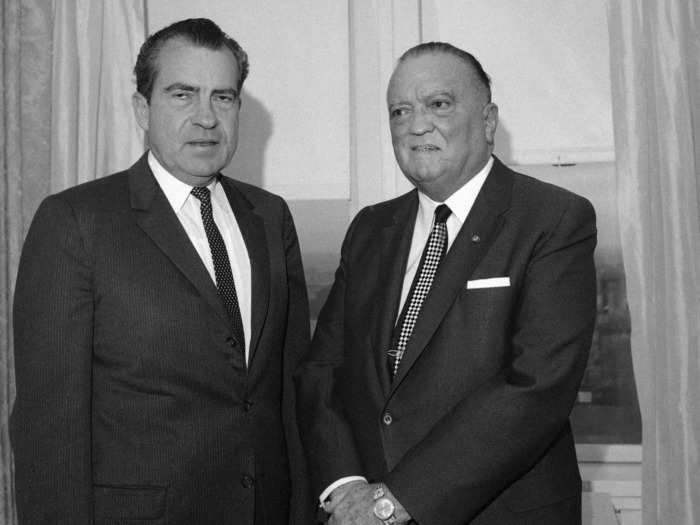
Nixon wanted the FBI to do more surveillance, especially on anti-war groups, but Hoover refused. The public had begun to turn against the FBI during the Vietnam War, and Hoover felt vulnerable.
Source: Conversation
In 1971, after more rebuffs from Hoover, Nixon decided to fire him. He wrote a script for a meeting but couldn't go through with it.
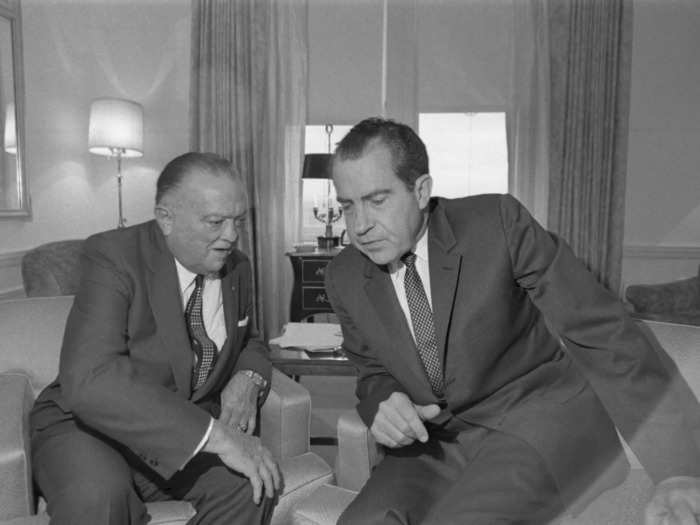
At the end of their meeting, Nixon even agreed to provide the FBI with more funding.
In response to criticism that Hoover needed to be put in his place, Nixon later wrote about the meeting, saying "If Hoover had decided not to cooperate, it would matter little what I had decided or approved."
Hoover died in his sleep the following year on May 2, 1972. He was 77 years old. He had led the bureau for 48 years.
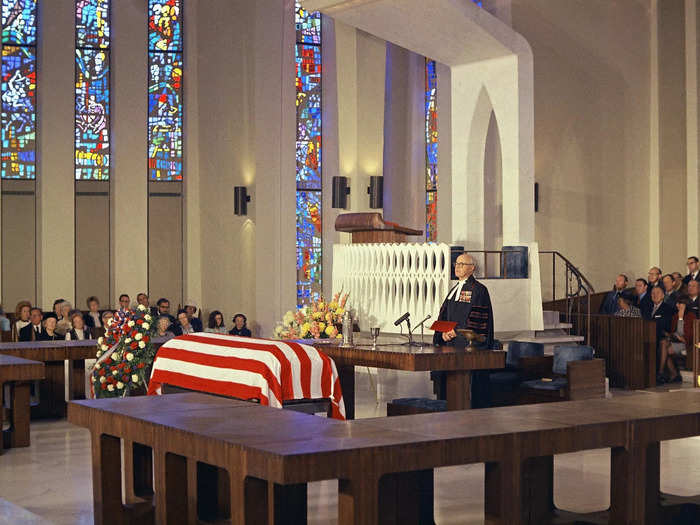
In private, Nixon reportedly said, "Jesus Christ! That old cocksucker!"
But in public, it was all decorum. He said Hoover had been, "One of the giants… a national symbol of courage, patriotism, and granite-like honesty and integrity."
In the days after his death Nixon ordered his staff to get any secret files that Hoover kept in his office, but they were too late.
Hoover's secretary, on his orders, had destroyed them.
However, an official count still found 883 files he'd had made on senators and another 772 on congressmen.
Sources: Atlantic, History, Atlantic, Guardian, Conversation
In the years after Hoover's death, his reputation swung in different directions.
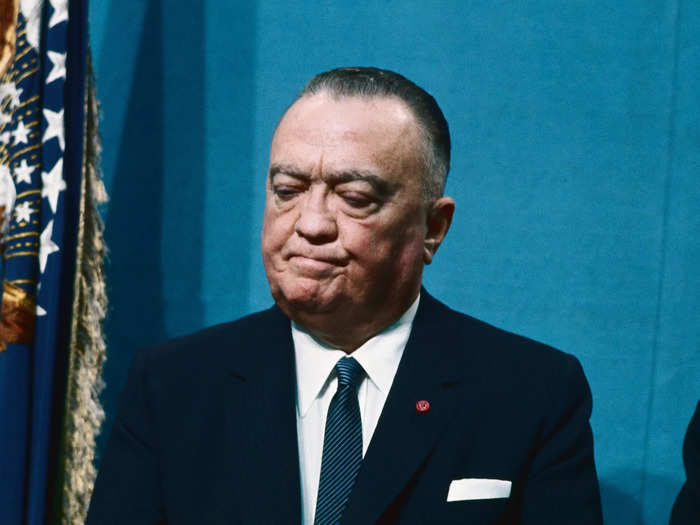
Although opinions differed on whether he did more harm than good, it seems mostly agreed that he was in power for too long.
A few years later, the FBI imposed a 10-year limit on its directorship so that no one else would ever have as much power, for so long, again.
Source: History
Popular Right Now
Popular Keywords
Advertisement